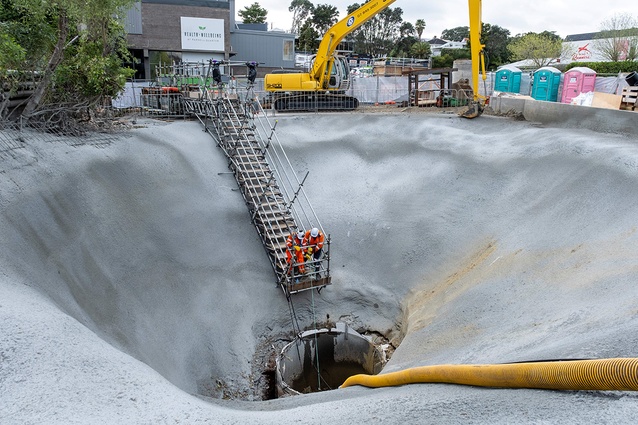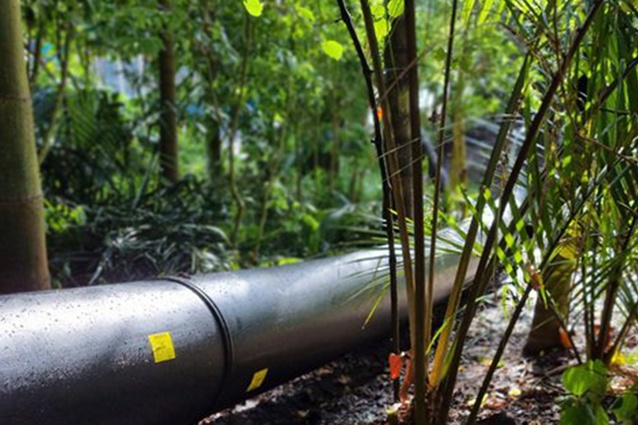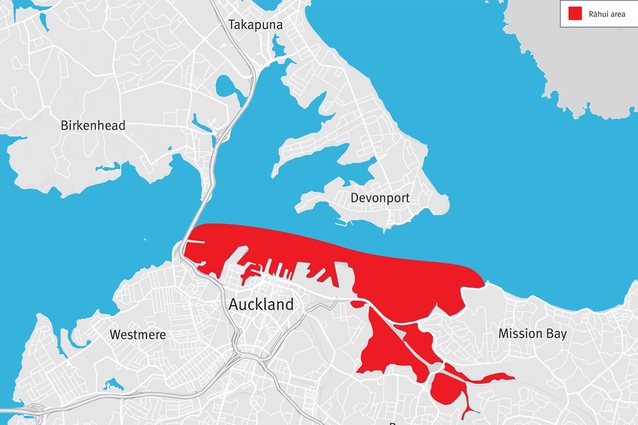Anatomy of a sinkhole
On the afternoon of Monday 25 September, Auckland water and wastewater services provider Watercare was alerted to a gaping, 20-metre-wide, 13-metre deep sinkhole in a carpark on St Georges Bay Road, Parnell. Editor, of Architecture New Zealand, Chris Barton, investigates.
It was caused by the collapse of a section of an aged 2.1-metre-diameter brick pipe of the Ōrākei main sewer — part of a network dating back to the 1920s, collecting both wastewater and stormwater for a large part of central and west Auckland.
The next day, after Watercare crews had used an excavator to widen the top of the sinkhole and concrete-sprayed the slope to stabilise the land, the site was now a massive, inverted cone-shaped crater. Discovering that the pipe was blocked, Watercare began clearing the blockage using a vacuum sucker truck and hydro-jetting water into the pipe to remove about three tonnes of the debris.
On Wednesday 27 September, when the story made the news, Watercare believed that the blockage extended for about eight metres and said its teams were modelling the likely overflow locations. In the meantime, it advised Aucklanders to avoid swimming, fishing and recreational activity in the Waitematā Harbour. Auckland Council’s Healthy Waters Safeswim website showed black don’t-swim, water-quality flags on all inner harbour beaches. In a period of three months, this was the third sinkhole to open in the city, after similar events on College Hill in Freemans Bay and Princes Street, Ōtāhuhu.
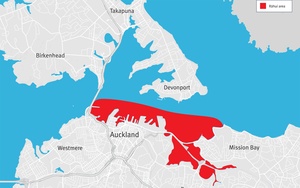
By Thursday, CCTV inspections revealed the blockage was much worse than the initial estimates, revealing a 25-metre-long debris field of clay, rocks and broken pieces of pipe. By then, Watercare realised it would take several weeks to clear the blockage and that long-term repairs would take several months.
In the interim, it would install an overland bypass pumping solution, powered by a generator, to transfer the wastewater around the blockage. Watercare estimated this would take 10 days. It also noted that high-volume overflows into the Waitematā Harbour, near Mechanics Bay and the port, were ongoing. Ngāti Whātua Ōrākei placed a rāhui stopping swimming, fishing and entering the water of the Waitematā to allow time for the harbour to recover from the contamination.
On Friday 29 September, Aucklanders learned what ‘high-volume overflows’ means — 150 litres of raw sewage a second or 12.96 million litres every 24 hours pouring into the Waitematā Harbour. Five days later, that equated to 64.8 million litres of sewage. Auckland University marine scientist Professor Andrew Jeffs described the overflow as the worst pollution event in Auckland for almost 50 years. He said the human waste would be destroying everything in its immediate path and choking filter-feeding organisms within a wider radius. Jeffs warned that bacteria and viruses found in human faeces would persist in the water for weeks and that there was also a risk that airborne particles could blow off the water surface over a one-kilometre radius.
By 2 October, Watercare had revised its time frame for its 400-metre-long bypass using 600mm-diameter pipe, saying it would take an additional two weeks. It also confirmed that, while hydro-jetting and suction to remove the blockage was continuing, a lot of large rocks in the pipe couldn’t be removed by this technique. The bypass solution was eventually completed on 17 October, some 23 days after Watercare was alerted to the sinkhole.
In that time, an estimated 285.12 million litres of raw sewage poured into the Waitematā Harbour. Watercare expects the bypass will be sufficient to handle normal flows in dry weather but says there may be overflows with heavy rain because of the combination of stormwater and wastewater in the pipes. Watercare also warned that the temporary pumps are more susceptible to blockages. It estimates it will take about six months to repair the damaged sewer.
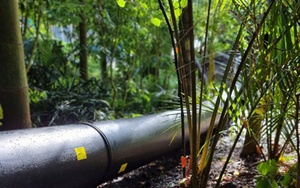
The sinkhole crisis paints a distressing picture of a city ill-prepared to cope with a broken pipe. It shows Watercare to be lacking in its preparedness to deal with such an event. Worse still, knowing it has an aged infrastructure with many of its pipes over 100 years old, Watercare clearly has insufficient proactive processes for regular checking of possible pipe collapse. Frequent use of ground-penetrating radar and other tools is sorely needed to catch defects before they cause this sort of catastrophe.
The collapse of a sewage pipe came as no surprise to Parnell business-owners who have been putting up with foul smells and sewage for months; many had complained to Watercare about sewage entering their properties after heavy storms and since the Anniversary Weekend floods. Despite these complaints, little action was taken to address these issues.
Watercare is in the process of engaging an engineering consultancy to review the cause of the Parnell sinkhole and subsequent Ōrākei main sewer blockage. The review will look at all data from the sinkhole site, as well as Watercare’s historical and planned maintenance and condition assessment programmes.
Good job, but we already know the answer. Ancient pipes mixing sewage and stormwater coupled with massive flood events means more pipes are going to break. Meanwhile, looking at the Safeswim website in late October and its array of black flags on inner-harbour beaches, swimming in the Waitematā this summer will likely be a daily calculation of risk to your health let alone to the environment. At the time of writing, we’re swimming in it.


